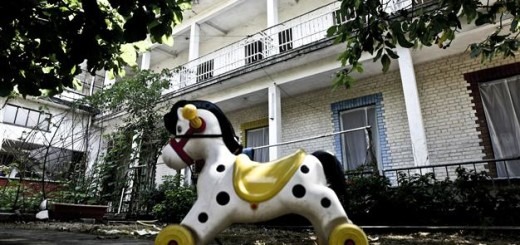Human Tragedy in Karabagh
By John Evans
Former US Ambassador to Armenia (2004-06)
(Exclusively for The California Courier)
We Americans are understandably focused on the multiple and interlocking tragedies that have taken place in the last month from Louisiana to Minnesota and most notably in Dallas. But half a world away a human tragedy of a different sort has been unfolding in the unrecognized Armenian-populated enclave of Nagorno-Karabakh, which in Soviet times enjoyed an autonomous status, but, as the USSR was collapsing, voted for independence and fought a terrible war with post-Soviet Azerbaijan that claimed some 30,000 dead on both sides. A fragile cease-fire was signed in 1994 under Russian sponsorship, but the “frozen” conflict has in recent years seen more violations of the Line of Contact, and more victims.
The “four-day war” initiated by Azerbaijan on April 2, 2016 (no close observer of the conflict lays the blame anywhere else) was the largest escalation of military conflict between Azerbaijan and Nagorno-Karabakh since the cease-fire was signed in 1994. Over ninety Armenians were killed, and more than 120, including civilians and children, were wounded. As the Armenian Ambassador to the United States said to me, on a per capita basis, this was equivalent to the U.S. losing 10,000 of its citizens. Thousands of people from the affected villages, mostly children, women and the elderly, were evacuated to the comparative safety of Stepanakert or neighboring communities, or to Armenia proper. I visited Karabakh in late June with Dr. Garo Armen of the Children of Armenia Fund in order to help him determine what COAF might do to ease the suffering of civilians that resulted from the fighting.
The Azerbaijani shelling, much of which was unleashed after the initial attack had already faltered, was most destructive to the border communities of Talish, Madaghis, Mardakert, Hadrout and Martuni. Talish has been entirely abandoned because of the risk of shelling; in fact, further shelling did occur there on June 30 when Azeri soldiers attacked three farmers in the fields. Many families, some of them grieving over their losses, are now internally displaced, still terrified from what they experienced and fearful of the future. Five hotels in Stepanakert were commandeered to house families and individuals who had no other place to go.
Immediately after the cessation of hostilities, the Yerevan office of the Children of Armenia Fund deployed two teams to Karabakh to assess the situation and, in some cases, to provide immediate assistance. The local authorities had attempted to mobilize limited resources to address the most pressing needs, and NGOs and some governmental structures from Armenia also joined in the effort to assist; however, what COAF discovered was that, while some of the emergency needs of the IDPs were partially met, psychological support for the affected people was sorely needed and there was no local capacity to address this issue.
While some efforts were made to address the needs of soldiers with psychosomatic conditions, the majority of the IDPs in the five hotels and elsewhere exhibited signs of trauma, behaving as “ghetto groups,” lost between a terrifying past and an uncertain future, closed inside their shells and praying for God’s help. Children who were enrolled to attend nearby schools feared to venture out to “life-threatening places where shooting and shelling cause death and injuries.” Images of the elderly Talish couple whose ears were cut off by the attackers, of the Yezidi soldier who was decapitated, and of other soldiers tortured and/or mutilated have not helped calm these people down. Some of the atrocities committed by the Azeris clearly were in the category of war crimes and played on the Armenians’ well-founded fear of genocide.
While we Americans have much to do to “fix our own country”, one of the responsibilities of great-power status is to prevent the world from becoming a jungle. Together with Russia and France, the United States has been attempting to mediate the Armenian-Azerbaijani dispute through the Minsk Group of the Organization for Security and Cooperation in Europe. In my view and that of many others, it is high time for the Karabakh authorities, unrecognized as they may be under international law, to be brought into the peace process. The Armenians of Karabakh, or, as they call it, Artsakh, are there to stay and deserve to live in peace in their towns, cities and mountains.
John Evans was recalled from his post as US Ambassador to Armenia in 2006 for publicly breaking with the Bush Administration over the Armenian Genocide. He recently published Truth Held Hostage: America and the Armenian Genocide–What Then? What Now? London: Gomidas Institute, 2016.








It is gratifying to hear Ambassador Evans acknowledge that the April war was started by Azerbaijan. He is correct, of course.
The Armenian posture is purely defensive. Armenians seek only to hold onto what they have.
I also commend Ambassador Evans for saying that it is essential that the Artsakh authorities be brought directly into the negotiations. Hopefully, the US State Department and the OSCE Minsk Group are listening to his advice instead of kowtowing to the demands of the dictator in Baku.
As for Azerbaijan’s goals: it aims to conquer Artsakh and drive out the Armenians.
The OSCE must realize that Armenians are not going to let that happen. No peace deal can be struck that would expose Artsakh to even the slightest risk. There is not going to be another genocide, at least not an Armenian genocide.